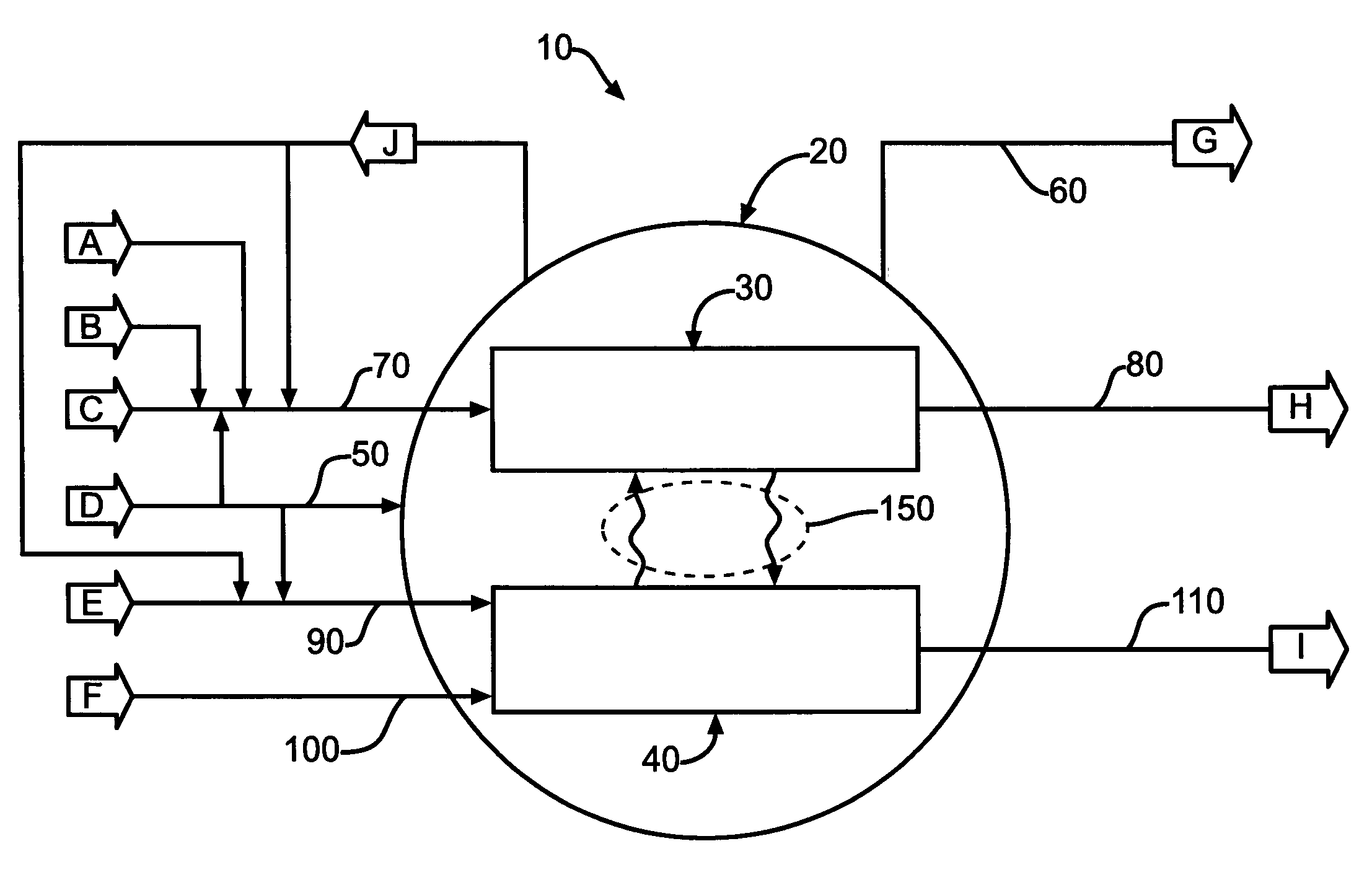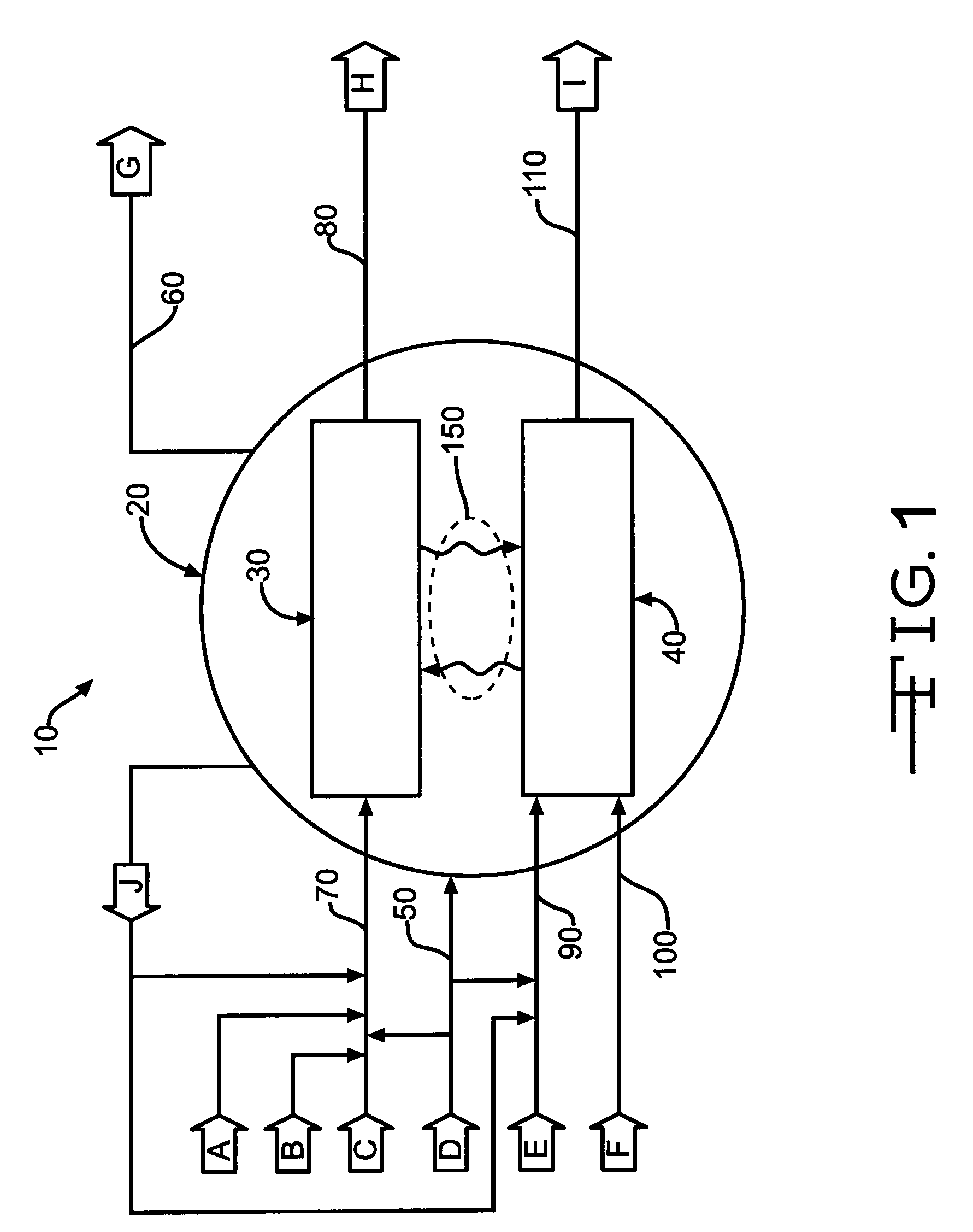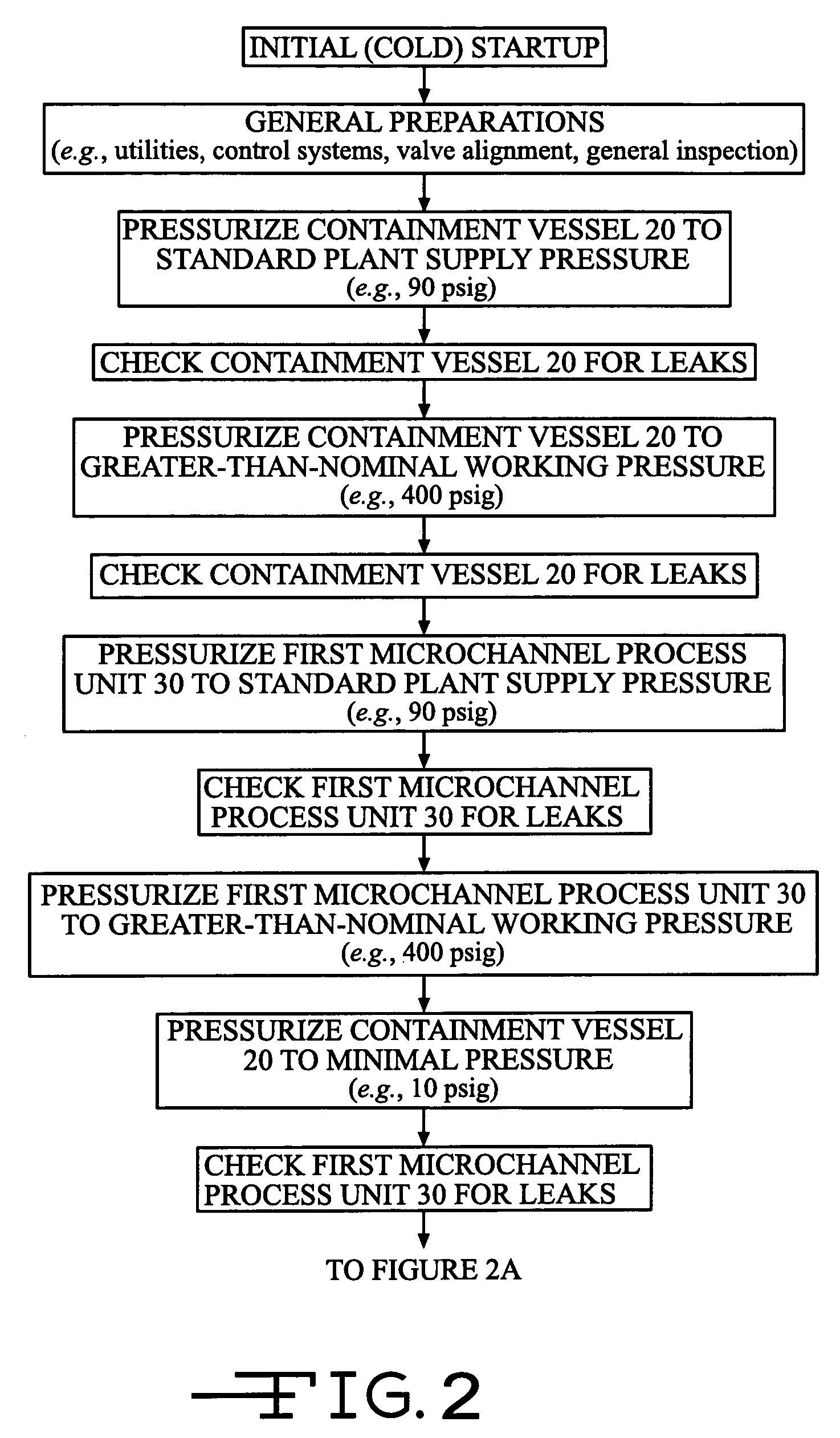Control of pressurized microchannel processes
a microchannel and process technology, applied in process and machine control, combustible gas production, chemical production, etc., can solve the problems of increasing the risk of damage to the device, increasing the complexity of the device, and reducing so as to increase the concentration of low-thermal energy density materials. , the effect of decreasing the proportion of diluen
- Summary
- Abstract
- Description
- Claims
- Application Information
AI Technical Summary
Benefits of technology
Problems solved by technology
Method used
Image
Examples
Embodiment Construction
[0020]The following reference indicators are provided as an aid to an understanding of the figures:[0021]10 microchannel process[0022]20 containment vessel[0023]30 first microchannel process unit[0024]40 second microchannel process unit[0025]50 containment vessel inlet[0026]60 containment vessel vent[0027]70 first microchannel process unit inlet[0028]80 first microchannel process unit outlet[0029]90 first process unit inlet to second microchannel process unit[0030]100 second process unit inlet to second microchannel process unit[0031]110 second microchannel process unit outlet[0032]150 process unit—process unit heat transfer[0033]A first reactant material[0034]B first catalyst activation material[0035]C second reactant material[0036]D pressurizing material[0037]E third reactant material[0038]F fourth reactant material[0039]G vented / flared material[0040]H first products material[0041]I second products material[0042]J purge material
[0043]Reference to FIG. 1, an exemplary microchannel ...
PUM
| Property | Measurement | Unit |
|---|---|---|
| height | aaaaa | aaaaa |
| height | aaaaa | aaaaa |
| pressure | aaaaa | aaaaa |
Abstract
Description
Claims
Application Information
 Login to View More
Login to View More - R&D
- Intellectual Property
- Life Sciences
- Materials
- Tech Scout
- Unparalleled Data Quality
- Higher Quality Content
- 60% Fewer Hallucinations
Browse by: Latest US Patents, China's latest patents, Technical Efficacy Thesaurus, Application Domain, Technology Topic, Popular Technical Reports.
© 2025 PatSnap. All rights reserved.Legal|Privacy policy|Modern Slavery Act Transparency Statement|Sitemap|About US| Contact US: help@patsnap.com



